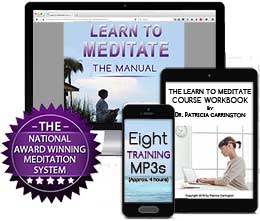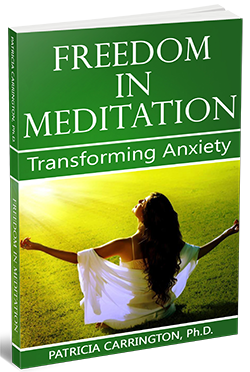Prayer and Meditation
The relationship of prayer to meditation is an elusive one…
In the great meditative traditions of both East and West, meditation is viewed as a spiritual exercise, a means of attaining a special kind of awareness that many consider to be the highest state of consciousness of which humans are capable. This advanced state can only be arrived at, however, as part of a total way of life.
Typical procedures followed are an ascetic lifestyle, special physical exercises, diet and social arrangements, together with long hours of meditation each day. Even then, it may take a lifetime (some people believe it takes many lifetimes) to arrive at, or even approximate, this desired state.
The formal discipline of meditation originated in religious practice, and its use as a spiritual exercise, still surpasses its use as a practical technique in most parts of the world. Hindu and Buddhist religions have developed meditation into a fine art, but other religious traditions have developed their own highly effective meditative practices, as well.
Some Christian practices, loosely termed “meditation,” are actually forms of “contemplation.” Rather than evoking the “meditative mood,” a prolonged, deeply reflective state of mind, they create an atmosphere where thought is directed, in a disciplined manner, to a specific theological issue or religious event, and strive to apply the religious idea contemplated to one’s own life.
Simple prayer is more commonly used by religious followers than meditation.
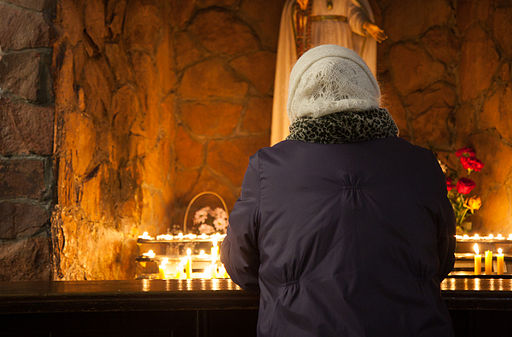
While intense prayer most likely cannot take place without entering a meditative mood, the mechanical repetition of standard common prayers to fulfill religious obligations does not require this special mood at all. The prayer, nonetheless, is a goal-directed activity to call upon a deity in some manner; to give praise or offer thanks, seek forgiveness, consolation or assistance; or enter into some other relationship with a deity.
In monasteries, repetition of words in praise of God has been widely used to evoke a special state in which the outer world is shut out and one is transported into an exalted sense of closeness with God. By this means, the mind is to become emptied of all thoughts, images, and passions.
The ‘Prayer of the Heart’ used by Russian monks and devout lay people in pre-revolutionary Russia is one example of this. The prayer was used to “purify the intellect” by means of a passive attitude and the repetition, on each successive out-breath , of the phrase ‘Lord Jesus Christ, have mercy on me.’ (see breathing meditation for additional historical Christian meditation prayer phrases.)
In that fashion, a Christian religious phrase was being used in the same manner as mantras are used in India.
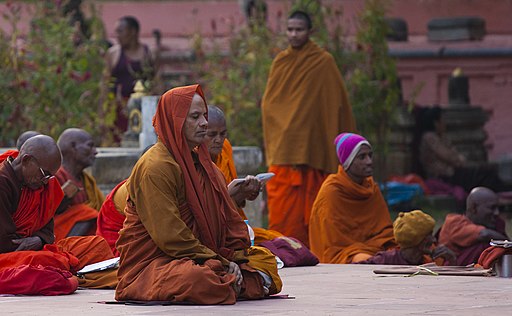
Engaged as a form of silent inner communion, or coupled with a mantra-like repetition of religious words, prayer can be seen to blend subtly into meditation.
Similarities Between Prayer and Meditation
While a goal-directed form of praying is quite different from a non-striving, relatively goal-less absorption of meditation, it is closely related to meditation in many ways. Both usually involve: an inward, contemplative state, undertaken in a quiet setting, and often in solitude. In meditation and in prayer outward stimuli are reduced and a special kind of soothing, monotonous environment is created.
In many religious practices, a number of accompaniments to traditional prayer are intended to evoke a sense of reverence and union with the deity, such as:
- an echoing inflection of ritual words and phrases chanted repeatedly
- closing, or partial closing, of the eyes
- reverberating music
- candlelight
- votive offerings
- a special sustained posture
- incense
- the sound of bells
- symbolic decorations, and the like.
These supportive elements are often also used in various forms of meditation; through them a meditative mood can be evoked in a highly effective manner.
There are, however, some important differences between meditation and prayer, even when meditation is used for spiritual purposes.
Meditation vs. Centering
According to the great meditative’ traditions, particularly forms practiced in monasteries, centering techniques; warming-up exercises, such as the silent repetition of a mantra or concentration on one’s breathing (or even progressive relaxation and any number of others) are not meditation. They are simply a means toward ‘true meditation;’ preliminary devices that are more or less interchangeable.
The advanced meditation practitioner will eventually discard all of them when the individual can achieve ‘true meditation,’ directly.
The average Westerner, however, approaches meditation, for the most part, on a practical level, and ordinarily does not consider it a deep spiritual commitment, if it is thought of as being spiritual at all. Most often it is learned to make life easier or more pleasant. Among participants in a mindfulness-based stress reduction program, researchers found that intention for joining the program was primarily for self-regulation, self-exploration, and self-liberation. (Carmody and Baer, 2009)
Certainly, it may be obvious to anyone who has ever meditated, by whatever technique, that there is no hard and fast line between the simple centering exercises and the deep meditative states.
One can commence by using the simplest of centering devices (for example, mentally repeating a mantra with eyes closed, as done in my easy form of meditation) and experience a profound metaphysical experience that changes one’s entire view of life. Or, one may embark on a more rigorous meditative journey to achieve deep spiritual awareness and find oneself in a pleasant, relaxing centering experience – with little more.
The boundaries, in other words, are absorbent. Inner experience extends where it will. It often resists control and refuses to be confined to categories. We cannot always legislate the deepest segments of our minds. Although we cannot equate prayer and meditation, we cannot fully separate them either. The two states are closely related, not only historically, but often in their spirit, and “purpose…”
Moreover, meditation – this simple, gentle method – has a profound gift for humanity. If we recognize its gift, and use it wisely, the result could be in a new flowering of the human spirit.
Related Product:
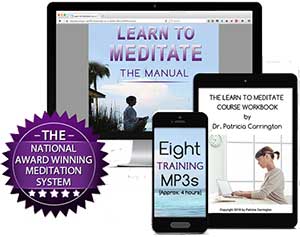 Clinically Standardized Meditation (CSM) has been used by individuals, medical institutions, and organizations, worldwide. The main advantages of CSM (and also its difference to other meditation techniques) are its simplicity, its flexibility and its sensitivity to the individual intentions and inclinations of those who learn it. CSM is extremely permissive, which makes it easier to personalize and internalize its experience.
Clinically Standardized Meditation (CSM) has been used by individuals, medical institutions, and organizations, worldwide. The main advantages of CSM (and also its difference to other meditation techniques) are its simplicity, its flexibility and its sensitivity to the individual intentions and inclinations of those who learn it. CSM is extremely permissive, which makes it easier to personalize and internalize its experience.






